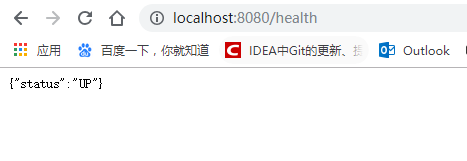Spring Boot项目健康检测
在之前的系列文章中我们学习了如何进行Spring Boot应用的功能开发,以及如何写单元测试、集成测试等,然而,在实际的软件开发中需要做的不仅如此:还包括对应用程序的监控和管理。
正如飞行员不喜欢盲目飞行,程序员也需要实时看到自己的应用目前的运行情况。如果给定一个具体的时间,我们希望知道此时CPU的利用率、内存的利用率、数据库连接是否正常以及在给定时间段内有多少客户请求等指标;不仅如此,我们希望通过图表、控制面板来展示上述信息。最重要的是:老板和业务人员希望看到的是图表,这些比较直观易懂。
我们需要验证项目是否正常工作,只需要添加一个依赖就行了,
<!--通过http://localhost:8080/health来查看 UP代表正常 用来测试程序是否安全 -->
<dependency>
<groupId>org.springframework.boot</groupId>
<artifactId>spring-boot-starter-actuator</artifactId>
</dependency>
访问如下地址:http://localhost:8080/health ,若项目正常,则会返回如下字符串。






 此前系列文章介绍了Spring Boot应用功能开发与测试,实际开发还需对应用监控管理。程序员需了解应用运行指标,老板和业务人员希望通过图表查看。验证项目是否正常工作,添加依赖后访问特定地址,正常则会返回字符串。
此前系列文章介绍了Spring Boot应用功能开发与测试,实际开发还需对应用监控管理。程序员需了解应用运行指标,老板和业务人员希望通过图表查看。验证项目是否正常工作,添加依赖后访问特定地址,正常则会返回字符串。
















 1546
1546

 被折叠的 条评论
为什么被折叠?
被折叠的 条评论
为什么被折叠?








